Text
Cuttlefish.
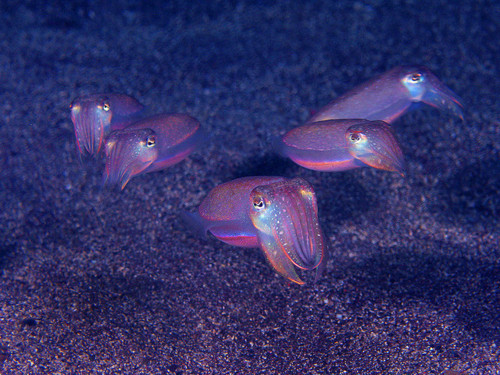
Scientific name:
Sepiida
Taxonomic Classification:
Kingdom: Animalia
Phylum: Mollusca
Class: Cephalopoda
Order: Decapodiformes
Family: Sepiida
Nutritional Requirement:
The Cuttlefish is primarily carnivorous and it will mainly eat small crustaceans (like shrimps and crabs) but the Cuttlefish will also eat small fish. The Cuttlefish hunts it prey by first blending in with the environment, and then surprising and killing its prey.
Growth and development:
The Cuttlefish, after hatching, will live its entire life on its own and without a mother or father. The Cuttlefish will grow into an adult in a short time and it has a full size of 15cm - 50cm and 3kg - 10.5kg. The Cuttlefish will also only live 2-3 years
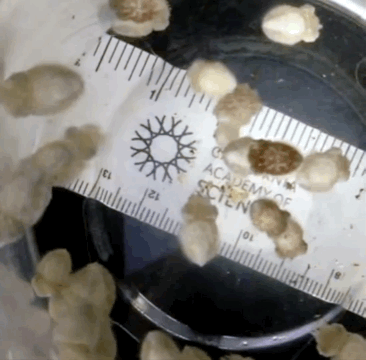
Behavior:
The predators of the Cuttlefish are large fish, sharks, and even other cuttlefish. In order to protect themselves against these predators, the Cuttlefish will project ink and flash numerous colors in order to confuse predators.
Reproduction:
Male Cuttlefish during mating season will turn different colors in order to attract females. A female Cuttlefish will lay about 200 eggs and then die immediately afterward.
Evolutionary Origins:
Cuttlefish evolved from the same common ancestor as squids and octopi.
Habitat:
Coastal and deeper waters
Thank you for reading!

Sources:
https://a-z-animals.com/animals/cuttlefish/
Image credit:
https://78.media.tumblr.com/a413d082ca582dc8ffde7e3ed43c420f/tumblr_owazf2vZdT1umfdd0o1_500.jpg
2 notes
·
View notes
Text
The Hermit Crab
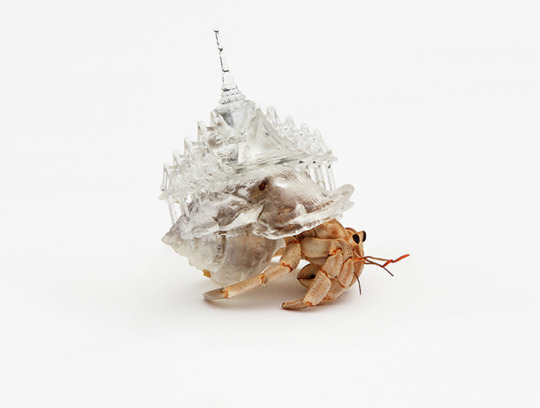
Scientific name:
Paguroidea
Taxonomic Classification:
Kingdom: Animalia
Phylum: Arthropoda
Class: Malacostraca
Order: Decapoda
Family: Paguroidea
Nutritional Requirement:
Hermit Crabs are omnivores and they will eat anything in their surrounding habitat. Small fish and invertebrates are the most common prey for the hermit crab along but they will also eat plankton and other food particles in the water.
Growth and development:
Hermit Crab larvae, once they hatch, will shed and expose their adult body. At full size, adult Hermit Crabs are 2-10cm and 200-500g and they will live for 1-10 years.

Behavior:
Because of their small size, Hermit Crabs have numerous natural predators all around the world, which includes sharks, fish, cuttlefish, squid, and octopuses. To prevent this hermit crabs often hide amongst other animals such as sea anemones as a form of natural protection.
Reproduction:
After mating female Hermit crabs will carry a large number of eggs that are attached to her abdomen. Once she releases them into the ocean the eggs will hatch after a couple weeks
Evolutionary Origins:
The hermit crab is mostly evolved from early crustaceans and is hardly related to actual crabs
Habitat:
found in ocean waters worldwide
Thank you for reading!
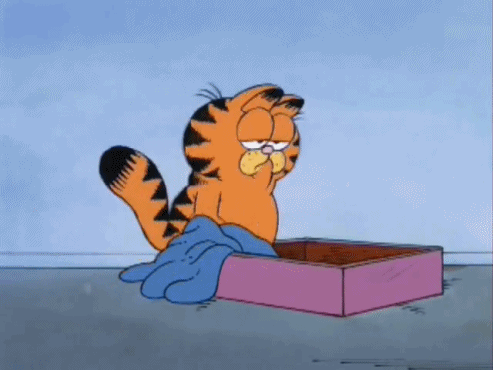
Sources:
https://a-z-animals.com/animals/hermit-crab/
Image credit:
https://inhabitat.com/wp-content/blogs.dir/1/files/2013/07/Aki-Inomata-hermitcrab6.jpg
2 notes
·
View notes
Text
Starfish :)
Scientific name:
Protoreaster Nodosus
Taxonomic Classification:
Kingdom: Animalia
Phylum: Echinodermata
Class: Asteroidea
Nutritional Requirement:
Starfish mainly feed on oysters and clams on the sea floor. They also have two stomachs to help the starfish ingest its prey.
Growth and development:
Starfish develop from eggs into larvae in which they can swim around. After about 3 weeks of swimming around as larvae, the starfish will then undergo metamorphosis and grow into a fully developed starfish. Starfish are normally about 5-20cm and 0.1-6kg, and they will live 3-27 years.
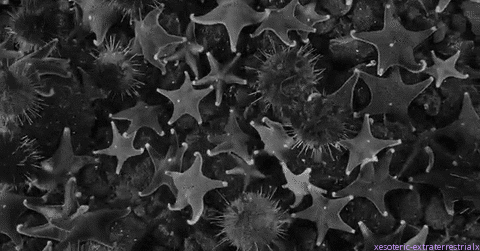
Behavior:
Starfish a very slow moving and are prey to animals like fish, crabs, rays, sharks, humans, and birds. If attacked by one of these predators the starfish can regenerate a damaged body part.
Reproduction:
Starfish can change gender when convenient, and when a starfish is female it can release up to 2 million eggs. Once eggs are released a currently male starfish can fertilize them.
Evolutionary Origins:
The first starfish where found in the Cambrian period and were known as Somasteroidea.
Habitat:
Shallow to deeper coastal waters around the world
Thank you for reading!

Sources:
https://a-z-animals.com/animals/starfish/
https://en.wikipedia.org/wiki/Starfish#Evolution
Image credit:
https://s12.favim.com/orig/160207/aesthetic-background-grunge-hipster-Favim.com-3967312.jpg
1 note
·
View note
Text
The Japanese Macaque

Scientific name:
Macaca fuscata
Taxonomic Classification:
Kingdom: Animalia
Phylum: Chordata
Class: Mammalia
Order: Primates
Family: Cercopithecidae
Genus: Macaca
Nutritional Requirement:
The Japanese Macaque or Snow monkey is an omnivore and will eat both plants and animals. The Japanese Macaque will mainly forage for fruits, berries, seeds, young leaves and flowers found on the ground and they will also hunt for crabs, insects and bird's eggs.
Growth and development:
After birth baby macaque, Japanese macaque becomes very reliant upon their mothers and they will remain very close to them for the first few years of their lives. After about 4-5 years the Japanese macaque will detach from its mother and will either travel with a new troop (monkey group) or remain in the one it was born in. The Japanese macaque will live up to 30 years and reach a full size of 80-95 cm and 5-14 kg.
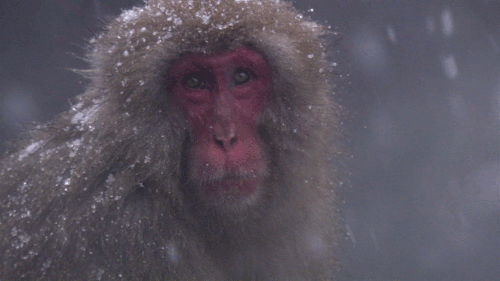
Behavior:
Japanese macaque will live together in troops of 20-30 monkeys that are lead by an alpha male. Troops often have ranks inside them and will rely on the alpha male to make decisions for the troop. Japanese macaque are very social animals and they will gain close bonds with other monkeys.
Reproduction:
A female macaque with generally pick a mate based upon the male macaque’s rank in the troop both macaques are in. The female Japanese macaque will generally have a gestation period of about 6 months and she will only give birth to a single infant.
Evolutionary Origins:
Due to the Japanese macaque being a northern living monkey species they have evolved from more common monkeys to be more suited their cold surroundings and changing seasons.
Habitat:
The Japanese macaque is found across northern and mainland Japan, as well as one of the country's southern islands.
Thank you for reading!
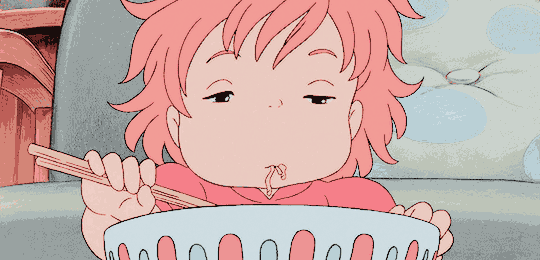
Sources:
https://a-z-animals.com/animals/japanese-macaque/
Image credit:
https://i.pinimg.com/originals/0c/78/aa/0c78aa682d145f8d787ab1ad1f728834.jpg
2 notes
·
View notes
Text
The Bobcat

Scientific name:
Lynx rufus
Taxonomic Classification:
Kingdom: Animalia
Phylum: Chordata
Class: Mammalia
Order: Carnivora
Family: Felidae
Genus: Lynx
Nutritional Requirement:
The bobcat is carnivorous and will only hunt and eat other animals. In warmer months the bobcat will mainly hunt small mammals like rabbits, hare, mice, birds, and they will also eat lizards on occasion. In colder months bobcats will hunt deer or fresh carrion.
Growth and development:
Bobcat kittens are born blind and won’t open their eyes until a period of at least 10 days has passed. Young bobcats will feed on their mother’s milk until they gain the strength to eat meat. Once the young bobcat learns how to hunt on it own, the bobcat will leave it’s mother and will be considered an adult, this milestone usually happens 8 months after birth. A full-sized bobcat is about 65cm - 100cm, weighs 4.1kg - 15.3g, and will live 12-15 years.

Behavior:
The bobcat is mainly solitary and is also nocturnal meaning it will only be seen awake during the hours of the night. Bobcats can be seen hunting during hours of dawn and dusk and sleeping in rock crevices or hollowed out trees during daylight hours. Bobcats will mark their territory with urine and will generally avoid other bobcats as to not get injured in a fight.
Reproduction:
Bobcats have a mating season in Winter and this is one of the only times two bobcats will be seen in close together. Males and females both mate with multiple partners and females will have a gestation period of 8-10 weeks. The bobcat kittens are usually born in a den in litters of 3.
Evolutionary Origins:
Bobcats are most closely related to the larger and more northerly dwelling Canadian Lynx and they likely both have the same common ancestor.
Habitat:
Bobcats are found across North America, southern parts of Canada, southern Mexico.
Thank you for reading!
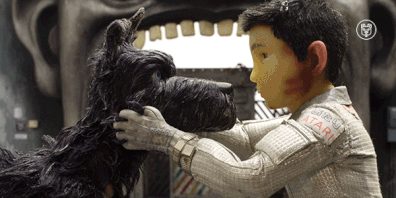
Sources:
https://a-z-animals.com/animals/bobcat/
Image credit:
https://northernwoodlands.org/images/articles/morse_cat.jpg
1 note
·
View note
Text
The Bandicoot

Scientific name:
Perameles
Taxonomic Classification:
Kingdom: Animalia
Phylum: Chordata
Class: Mammalia
Order: Peramelemorphia
Family: Peramelidae
Nutritional Requirement:
The Bandicoot will eat both plant and animal matter and will primarily feed on insects that Bandicoot will hunt by digging up the ground. Bandicoot has also been known to eat fruits, berries, nuts, seeds, eggs and even small rodents when they are a desperate need for food.
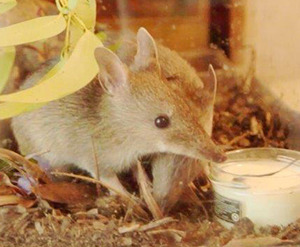
Growth and development:
Bandicoot is marsupials, this means that young Bandicoot will spend most of its early life in its mother's nursing pouch. The Bandicoot will nurse from its mother until it reaches full strength and a full size of 28cm - 81cm with a weight 0.2kg - 1.6kg. The Bandicoot will live 3-7 years
Behavior:
The Bandicoot is primarily solitary and nocturnal. This means the Bandicoot will spend it’s daylight hours hiding in bushlands and creek beds and then it will spend its nighttime hours hunting for food. Due to Bandicoot’s small size, it has a large number of predators including large birds, foxes, snakes, wildcats, and humans. This large selections of predators for the Bandicoot have played a part in the Bandicoot endangered status.
Reproduction:
Bandicoots are mainly solitary creature but they will meet up with other Bandicoots in order to mate. Bandicoot’s don’t have any specific mating season and they have the shortest gestation period of any mammal with the young being born just 12 days after conception. A female with normally give birth to a litter of 3-6 young and she will nurse them in her pouch until they are strong.
Evolutionary Origins:
Bandicoots are closely related to rats.
Habitat:
Found in the Australian wilderness
Fun Fact:
The name bandicoot is taken from the term ‘pandi-kokku’ which means ‘pig-rat’ in Telugu, an Indian language
Thank you for Reading!
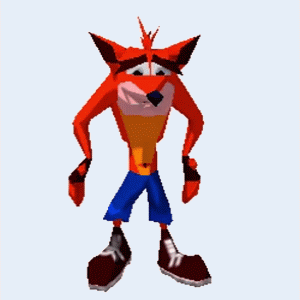
Sources:
https://a-z-animals.com/animals/bandicoot/
https://www.bushheritage.org.au/species/bandicoots
Image credit:
http://www.australianwildlife.org/media/213684/western-barred-bandicoot-low-res-copyright-awc.jpg
https://www.wires.org.au/wildlife-info/wildlife-education/Bandicoot.jpg
2 notes
·
View notes
Text
The Peafowl
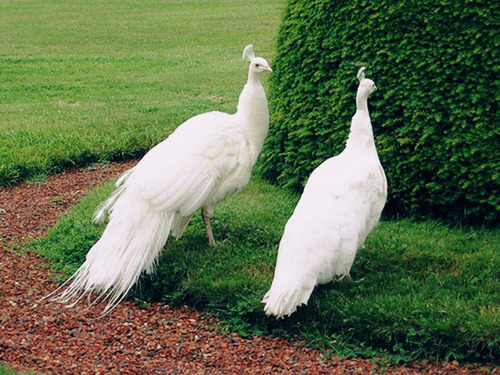
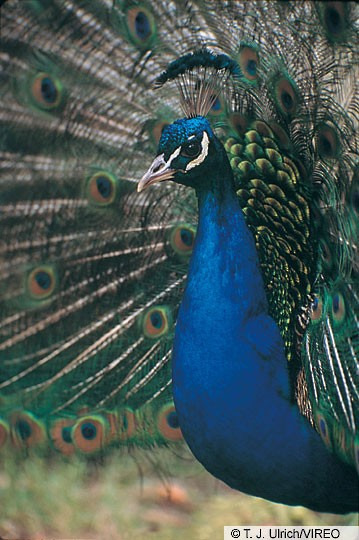
Scientific name:
Pavo Cristatus
Taxonomic Classification:
Kingdom: Animalia
Phylum: Chordata
Class: Aves
Order: Galliformes
Family: Phasianidae
Genus: Pavodae
Genus: Pavo
Nutritional Requirement:
Peafowl will eat a wide variety of foods their main diet consists of flower petals, seed heads, insects and other arthropods, reptiles, and amphibians. Peafowl gets their food by picking apart leave littler during early morning or around dusk. Domesticated peafowl may eat bread and cracked grain such as oats and corn, cheese, cooked rice and sometimes cat food.
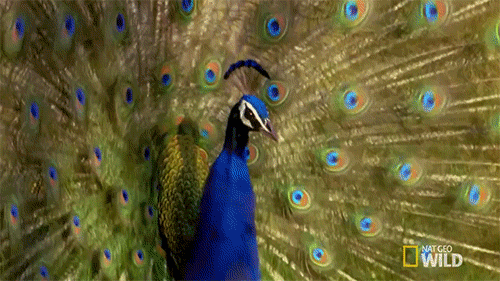
Growth and development:
Baby peafowl, also known as Peachicks, are born weighing 3.6 ounces and will become fully feathered within a couple of weeks. It takes about 3 years for a peachick to develop into a peafowl and they can have a lifespan of 12-20 years in the wild and 40-50 years in captivity.
Behavior:
Peafowl will nest on the ground and roost in trees most of the time. Peafowl is believed to be polygamous meaning a single male will have more than one mate. When provoked peafowl will get into territorial fights and use thorns on their legs to fight.
Reproduction:
When trying to attract a mate male peafowl, also known as peacocks, will spread their train feathers and make the feathers shake. If the Peahen is impressed by the peacock’s dance she will go and join the peacock’s harem. Peafowl reaches sexual maturity at 2-3 years old and peahen will lay 6-12 egg from April to September after mating with a peacock.
Evolutionary Origins:
The Peafowl is most closely related to the pheasant.
Habitat:
Peafowl live in forests and farmland. They can also be found in bushlands and rainforests. Some will nest on the ground while some will roost in trees.
Thank you for reading!

Sources:
https://animalcorner.co.uk/animals/peafowl/
https://a-z-animals.com/animals/peacock/
https://en.wikipedia.org/wiki/Peafowl#Behaviour
Image credit:
https://s-media-cache-ak0.pinimg.com/originals/24/be/c4/24bec4b693b4aabf324c9c6a1f55c94f.jpg
https://download.ams.birds.cornell.edu/api/v1/asset/24895901
2 notes
·
View notes
Text
The Bumblebee!
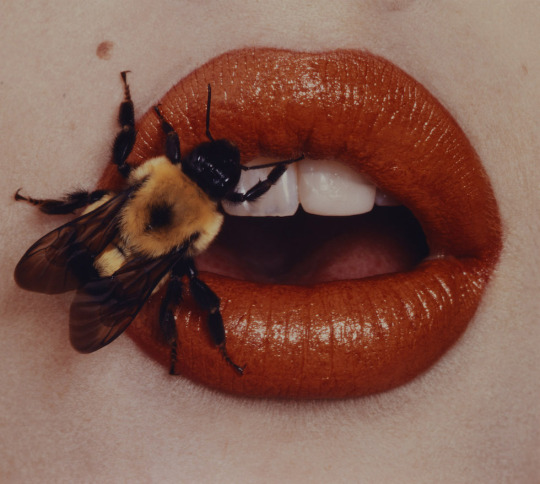
Scientific name:
Bombus
Taxonomic Classification:
Kingdom: Animalia
Phylum: Arthropoda
Class: Insecta
Order: Hymenoptera
Family: Apidae
Genus: Bombus
Nutritional Requirement:
The Bumble Bee’s diet consists of pollen and nectar from flowering plants. Worker bees will collect the nectar and pollen and bring it back to it’s colony for other non-worker bees to eat. By collecting food Bumble Bees help to play a big part in pollinating flowers.
Growth and development:
The fact of whether a bumble bee egg is fertilized or not determines the type of bumblebee that will be born. Fertilized eggs produce females (queens and workers), and unfertilized eggs produce male drones. Once an egg hatches the bee larvae will take about 5 weeks to go through the stages to reach adulthood. Once a bumble bee is fully grown it will be about 1.9-3.8 cm and it will live for about a year.

Behavior:
Bumblebees live in large colonies and are primarily active during daylight hours. A bee colony consists of a queen bee responsible for reproduction, drone bee responsible for fertilizing the queen, and worker bees made to maintain the hive’s well being. Bumblebee are only hostile if around a nesting site and females can sting multiple times if provoked.
Reproduction:
The queen bee is responsible for reproduction in a colony and will produce primarily in the winter. Pollen stimulates the ovaries of the queen bee to produce eggs. Eggs are laid in batches of 4 to 16 eggs on a ball of pollen.
Evolutionary Origins:
Bumblebees evolved from corbiculate bees.
Habitat:
Quiet Forests and Pastures
Thank you for reading!

Sources:
https://a-z-animals.com/animals/bumble-bee/
http://naturemappingfoundation.org/natmap/facts/bumblebee.html
Image credit:
https://www.ilpost.it/wp-content/uploads/2015/10/penn_bee1.jpg
1 note
·
View note
Text
The African Hedgehog!

Scientific name:
Atelerix albiventris
Taxonomic Classification:
Kingdom: Animalia
Phylum: Chordata
Class: Mammalia
Order: Eulipotyphla
Family: Erinaceidae
Nutritional Requirement:
Hedgehogs are insectivores and will mainly eat insects and arachnids but hedgehogs have also been seen eating things like snails, eggs, fungi, and other small meals that aren't normally part of an insect diet.
Growth and development:
Hedgehog babies, also known as Neonates are born blind and naked. The hedgehog’s signature spines don’t start to appear until about three days after birth. The hedgehog will begin to fully a mature after 18 days and will be fully mature at 1 year. Hedgehogs will live for about 1-3 years in the wild and when mature will weigh about 1.7 lbs.
Behavior:
The hedgehog is primarily solitary and will only meet with other hedgehogs during breeding seasons. Hedgehogs will become aggressive when their territory is threatened and they will hiss and stick out their spines.
Reproduction:
Hedgehogs don’t have any particular time of year when they breed and will breed once they reach sexual maturity at 1 year old. The hedgehog will have a 30-40 day gestation period and will birth a litter of 2-10 Neonates.
Evolutionary Origins:
The African Hedgehog has been found to have evolved from the Litolestes, a very early mammal with similar traits to the African Hedgehog.
Habitat:
Hedgehogs can mainly be found in the wilds of Africa
Fun Fact!
Ancient Romans kept Hedgehogs and they even had a “Hedgehog Day” to predict Spring
Thank you for reading!
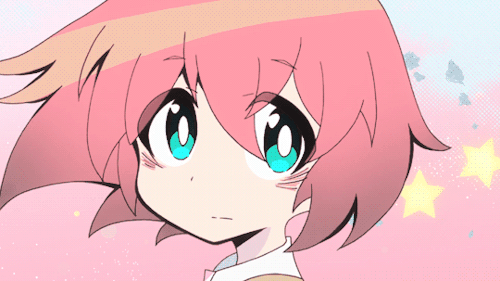
Sources:
https://en.wikipedia.org/wiki/Four-toed_hedgehog
http://www.untamedscience.com/biodiversity/african-pygmy-hedgehog/
https://african-pygmy-hedgehog.weebly.com/evolution.html
Image credit:
https://data.whicdn.com/images/219155974/large.jpg
2 notes
·
View notes
Text
The Raccon
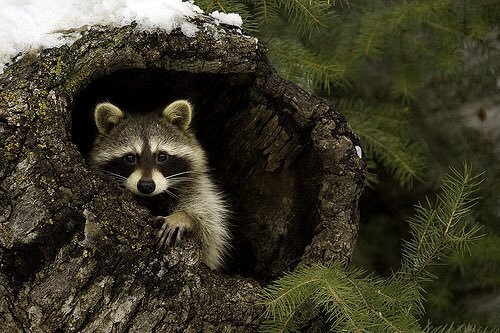
Scientific name:
Procyon lotor
Taxonomic Classification:
Kingdom: Animalia
Phylum: Chordata
Class: Mammalia
Order: Carnivora
Family: Procyonidae
Genus: Procyon
Nutritional Requirement:
Raccoons are omnivores and will eat anything and everything. Their diets will change based on what season it is and what their environment is. This is due to raccoons being foragers, meaning they will eat whatever they can find.
Growth and development:
After a Procyon lotor is born it is carried by its mother by its neck will be and it will be weaned for about 70 days. After about 9-12 weeks the raccoon will be able to hunt for itself. A raccoon in the wild will live for 2-3 years, but in captivity, they have been known to live up to 20 years.

Behavior:
Raccoons are nocturnal and will mainly forge and feed during nighttime hours. Although one might think raccoons would be solitary, raccoons actually congregate in gender-specific groups.
Reproduction:
Racoons begin mating season anytime between January and June and raccoons are able to mate once they are 1 year old. A female will have 65 day gestation period and will give birth to about 2-5 raccoon kits.
Evolutionary Origins:
Racoons share a common ancestor with weasels and raccoons have been found to originate Europe about 25 million years.
Habitat:
Racoons can be found in wooded areas near water
Fun Fact!
The raccoons signature black mask is there to aid the raccoon in night vision!
Thank you for reading!

Sources:
https://www.thespruce.com/raccoon-diet-1239361
https://en.wikipedia.org/wiki/Raccoon#Taxonomy
http://www.nhptv.org/natureworks/raccoon.htm
http://www.pbs.org/wnet/nature/raccoon-nation-raccoon-fact-sheet/7553/
Image credit:
https://pbs.twimg.com/media/DEsJnN1XUAAjPXn.jpg
1 note
·
View note
Text
The Dumbo Octopus!

Let’s take a look at this rare, deep diving octopus!
Scientific name:
Grimpoteuthis
Taxonomic Classification:
Domain: Eukarya
Kingdom: Animalia
Phylum: Mollusca
Class: Cephalopoda
Order: Octopoda
Family: Opisthoteuthidae
Genus: Grimpoeuthis
Nutritional Requirement:
The Dumbo Octopus will find most of its prey in floating in an ocean current or an ocean vent ecosystems. The Dumbo Octopus will eat their prey whole and their diet mainly consists of copepods, isopods, bristle worms, and amphipods.
Growth and development:
Once the Grimpoteuthis is born its mother will not help it and will leave the hatching site. The Grimpoteuthis knows how to fend for itself from the time it’s born and it will do so as it grows to a full size of 20-30 cm and 5.9 kg. The Grimpoteuthis will also have a lifespan of 3-5 years.
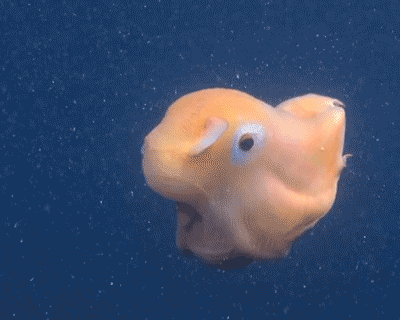
Behavior:
The Dumbo Octopus passively flouts at deep sea levels and it can move through water rather easily by flapping its “Dumbo Ear” fins and by expanding and contracting its small tentacles. When threatened the Dumbo Octopus fill flee quickly by projecting itself with its tentacles and unlike other octopi, it cannot squirt ink at a predator.
Reproduction:
The Grimpoeuthis does not have a breeding season and female octopi will continuously lay eggs on the seafloor. Male and female Grimpoeuthis can mate anytime and the female can also utilize fertilization at any time as well. Essentially the Grimpoeuthis can mate and give birth whenever needed.
Evolutionary Origins:
The Grimpoteuthis has evolved to be able to live in intense water pressure by forgoing prepositions and growing mantel fins.
Habitat:
The Dumbo Octopus lives slightly above seafloor depths at 3000 to 7000 m below sea level.
Fun Fact!
The Grimpoteuthis lives in the deepest depths of any octopus species!
Thanks for Reading!
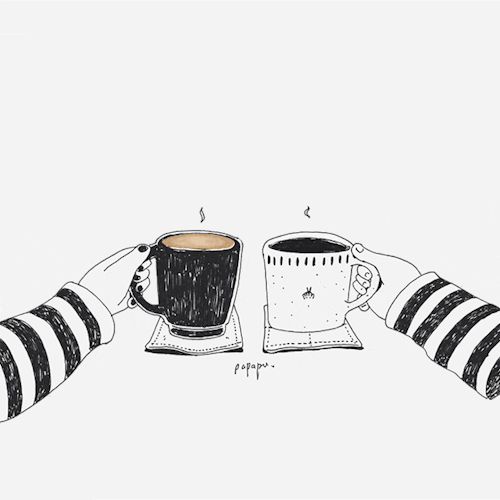
Sources:
http://domainsoflife.yolasite.com/Dumbo-Octopus.php
http://www.aquariumofpacific.org/onlinelearningcenter/species/dumbo_octopus
https://en.wikipedia.org/wiki/Grimpoteuthis#Breeding
Image credit:
http://mainichi.jp/graph/2014/05/01/20140501dde012040003000c/image/002.jpg
1 note
·
View note
Text
The Fennec Fox
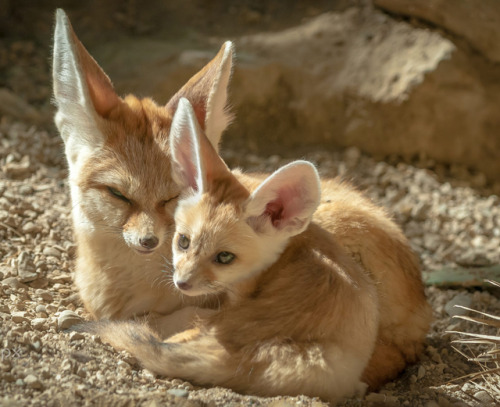
Let’s take a look at these small desert-dwelling creatures! Scientific name:
Vulpes zerda
Taxonomic Classification:
KINGDOM: Animalia
PHYLUM: Chordata
CLASS: Mammalia
ORDER: Carnivora
FAMILY: Canidae
Nutritional Requirement:
Fennec Foxes are foragers and will mostly forage from plants but they also eat rodents, eggs, reptiles, and insects. Interestingly, Fennec Foxes, due to their desert-dwelling nature, can go long periods without water in their diet.
Growth and development:
When a Vulpes zerda is born, it has grey skin and weighs about 50 grams. The kit will then drink their mother’s milk for about 5 weeks before moving onto solid foods. A Vulpes zerda will fully mature to a full size of 24-41 cm and 2-3 lbs once they are 11 months old and they will go on to live for 10-14 years.

Behavior:
Fennec Foxes will live in medium-sized communities with about 10 other foxes. These communities will forge and feed together and they will mark their territory by marking their boundaries with urine. Fennec Foxes are generally pretty calm but will become very aggressive towards the mating season.
Reproduction:
The Vulpes zerda will have a mating season during January and March and they will mate for life after finding a companion. After a 2 month gestation period, a Vulpes zerda will give birth to a litter of 2-5 fox kits.
Evolutionary Origins:
The Fennec Fox evolved from dogs in South Africa, they the smallest species of canines.
Habitat:
The Fennec Fox can be found in the Sahara and other areas of North Africa.
Fun Fact!
Fennec Foxes have amazing hearing because of their large ears and can listen to prey that’s underground.
Thank you for reading!

Sources:
https://a-z-animals.com/animals/fennec-fox/
https://www.nationalgeographic.com/animals/mammals/f/fennec-fox/
https://seaworld.org/Animal-Info/Animal-Bytes/Mammals/Fennec-Fox
Image credit:
https://78.media.tumblr.com/609ca53662cdcb7a55038cebbbc33f16/tumblr_oo9l20I02v1rcreq5o1_500.png
2 notes
·
View notes
Text
The Pangolin!
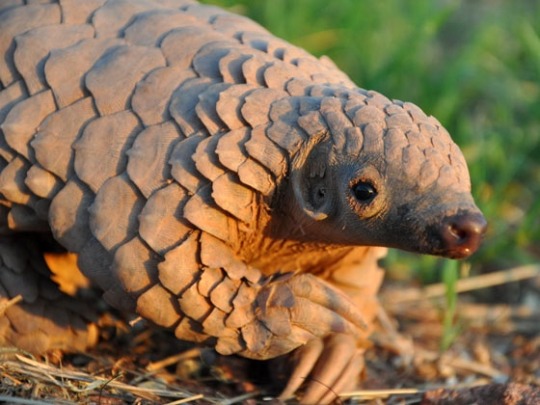
Let’s take a look at the “Scary Anteater” or the Pangolin! Scientific name:
Manis temminckii
Taxonomic Classification:
Domain: Eukarya
Kingdom: Animalia
Phylum: Chordata
Class: Mammalia
Order: Pholidota
Family: Manidae
Genus: Manis
Nutritional Requirement:
A Pangolin’s diet will mainly eat insects like ants or termites. Pangolins will eat the insects by digging its claws into an insect mound and then eating the insects by slurping them up with its extremely long tongue.
Growth and development:
When a Manis temminckii is born they are 6 inches long and 12 ounces at birth. They will start out soft pink scales but they start to harden at 2 days after birth. Pangolins will feed on their mothers for 4 months and then start to grow to a full size of 30-40 lbs and 12-39 in. Pangolins will live up to 20 years.
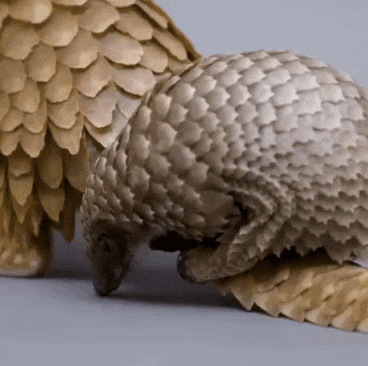
Behavior:
Pangolins will remain in their burrows during daylight hours and only come out at night to hunt. When threatened the Manis temminckii will roll themselves into a ball at self-defense, their scales can be used to cut and they are attached to strong muscles, this makes touching the Pangolin in this phase very dangerous.
Reproduction:
The Manis temminckii will reach sexual maturity at 2 years old and will usually give birth to a single offspring after a gestation period of 65-139 days.
Evolutionary Origins:
Pangolins originally didn’t have scales to evolve to have them to protect themselves from infection that can come from diseases.
Habitat:
Dense forests or forests savannas
Fun Fact!
A Pangolins scales are made of keratin, this is the same material as human hair!
Thank you for reading!

Sources:
http://bioweb.uwlax.edu/bio203/s2012/grosshue_crai/classification.htm
http://www.awf.org/wildlife-conservation/pangolin
http://savepangolins.org/what-is-a-pangolin/
https://www.ncbi.nlm.nih.gov/pmc/articles/PMC5052048/
Image credit:
https://upload.wikimedia.org/wikipedia/commons/1/17/Manis_temminckii_%2829600162001%29.jpg
2 notes
·
View notes
Text
The Giant African Snail
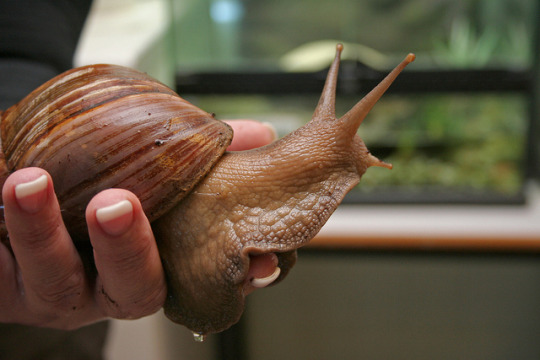
Let’s take a look at this very strange snail!
Scientific name:
Achatina Fulica
Taxonomic Classification:
Kingdom: Animalia
Phylum: Mollusca
Class: Gastropoda
Order: Achatinoidea
Family: Achatinidae
Nutritional Requirement:
The Giant African Land Snail mainly eats vascular plant matter. The Giant Snail will use its sense of smell to find dead or alive plant matter, some of the most common plants eaten by the snail are bananas, beets, marigolds, eggplants, pumpkins, and cucumbers.
Growth and development:
Eggs of the Achatina Fulica will be laid in a nest to protect and disguise the eggs. Once the eggs hatch, young snails will take 6 months reach a full size of 15-20 cm and it will live for 3-10 years.

Behavior:
The Giant Snail is mainly solitary, it won’t even interact with their own offspring and will only interact during mating. The snail will use a slime-like substance to glide over any surface easily and when threatened the Giant Snail will glide away and hide in the dirt by burrowing in it.
Reproduction:
The Achatina Fulica is hermaphroditic meaning it has both male and female reproductive parts. The Giant African Snail will choose who mate with based on size and younger or smaller snail need to reproduce with lager or older snails. Breeding season for the Giant Snail can take place any time of year.
Evolutionary Origins:
The Achatina Fulica Evolved from ancient island snails.
Habitat:
Humid Forest Areas in East Africa, the Giant Snail snail is an invasive species in some parts of America
Fun Fact!
The Giant African Snail, like other snails, is considered a delicacy and will be eaten.
Thank you for reading!

Sources:
https://a-z-animals.com/animals/giant-african-land-snail/
http://animaldiversity.org/accounts/Achatina_fulica/
Image credit:
https://s-media-cache-ak0.pinimg.com/originals/59/1d/68/591d68c178cba7371e7638e4f79bcc9d.jpg
1 note
·
View note
Text
The Least Weasel
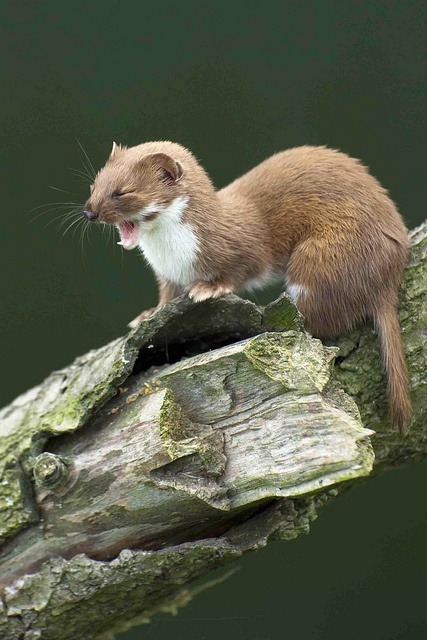
Let’s take a look at the small but fierce Least Weasel!
Scientific name:
Mustela nivalis
Taxonomic Classification:
Kingdom: Animalia
Phylum: Chordata
Class: Mammalia
Order: Carnivora
Family: Mustelidae
Nutritional Requirement:
Least Weasels feed primarily on fresh prey and will eat half their body weight each day. Their prey is mainly mice and voles but sometimes Least Weasels will also prey on insects, any food that isn’t eaten immediately will be stored in a weasel burrow.

Growth and development:
Mustela nivalis are born without any hair and teeth are often very small. The baby Least Weasel will then be weaned for 6 weeks and baby will start to learn how to kill prey. A grown Mustela nivalis will weigh about 47 grams and will live up to 4 years in the wild.
Behavior:
Least Weasels usually stay in one place and will remain solitary unless it’s during a breeding season. The Weasels live in dens and will mark their territory with scent glands, occasionally Least Weasels will perform a hostile dance to draw threats away from their den.
Reproduction:
Depending on where they're located, the Mustela nivalis will breed in any season, except for winter. Female weasels will reach sexual maturity at 4 months and will give birth to 2 liters of 1-6 young.
Evolutionary Origins:
The Least Weasel evolved from smaller grassland rodents that appeared 5 million years ago.
Habitat:
Least Weasels can be found spread around the Northern Hemisphere
Fun Fact!
Mustela nivalis have long whiskers that can sense vibrations, this helps Least Weasels hunt down prey.
Thank you for reading!

Sources:
http://animaldiversity.org/accounts/Mustela_nivalis/classification/
http://bioweb.uwlax.edu/bio203/2010/nuernber_kels/nutrition.htm
https://nature.mdc.mo.gov/discover-nature/field-guide/least-weasel
http://genomics.senescence.info/species/entry.php?species=Mustela_nivalis
http://www.biokids.umich.edu/critters/Mustela_nivalis/
Image credit:
https://78.media.tumblr.com/88ed1c2c9ae7fbb2d2803a948433fa44/tumblr_nlhl4umCBL1rr8qdmo1_500.jpg
http://1.bp.blogspot.com/_99YVDoKqU9A/SxDtFL_qokI/AAAAAAAAOx0/Ib5rk0TwxPY/s1600/1.jp
2 notes
·
View notes
Text
The Snowy Owl

Let’s start the New Year by taking a look at the snowy owl!
Scientific name:
Bubo scandiacus
Taxonomic Classification:
Kingdom: Animalia
Phylum: Chordata
Class: Aves
Order: Strigiformes
Family: Strigidae
Nutritional Requirement:
Snowy Owls will kill and eat from a wide variety prey, but they will mainly depend on small animals like lemmings or voles. Bubo scandiacus will also scavenge from larger animals as well.
Growth and development:
The Bubo scandiacus will be hatched after a 5 week incubation period. Once the snowy owl chick has hatched the chicks will then be protected and fed my the father and mother owl. The Bubo scandiacus will leave its parents once it reaches its full size of 60cm - 75cm and will live up to 17 years

Behavior:
Snowy Owls are generally loners and will hang out near the ground in wide open areas when flying or walking. Snowy owls will spend their time looking for prey on the ground and protecting their territory from intruders.
Reproduction:
Bubo scandiacus will breed on the Arctic Tundra. Females will lay a clutch of 3-11 eggs depending on the availability of food. Occasionally during the breeding season, snowy owls won’t breed if food is scarce enough.
Evolutionary Origins:
Nobody knows why the snowy owl’s ancestors originally moved to the Arctic. But it’s has been found that Bubo scandiacus had evolved to get thicker and whiter feathers than other owls.
Habitat:
Snowy Owls live in the forests of the Arctic Tundra.
Fun Fact!
Snowy Owls are diurnal meaning they are active during night and day.
Thank you for reading!

Sources:
https://a-z-animals.com/animals/snowy-owl/
https://www.allaboutbirds.org/guide/snowy_owl/id
https://birdsna.org/Species-Account/bna/species/snoowl1/foodhabits
https://birdsna.org/Species-Account/bna/species/snoowl1/behavior
https://www.nationalgeographic.com/animals/birds/s/snowy-owl/
http://www.owlworlds.com/snowy-owl/
Image credit:
www.ottawacitizen.com/life/cms/binary/9279504.jpg?size=640x420
1 note
·
View note
Text
The Reindeer

Merry Christmas! For the last blog of this semester let’s take a look at the Reindeer!

Scientific name:
Rangifer tarandus
Taxonomic Classification:
Kingdom: Animalia
Phylum: Chordata
Class: Mammalia
Order: Cetartiodactyla
Family: Cervidae
Nutritional Requirement:
In wild reindeer will forge and eat many different types of plants like grass and tree leaves. Reindeer will also tend to eat more in the Spring than in the winter.
Growth and development:
When a Rangifer tarandus is 5-20 pounds at birth and reach maturity at 4-6 years old. At full-size reindeer’s are 28-53 inches tall, have a weight of 121-529 pounds, and have a lifespan of 15-18 years.
Behavior:
Reindeer will travel in a large pack that can reach up to 500,000 reindeer per group. Herds will generally travel to follow food and communicate with several types of snorts, calls, and grunts. When angered Rangifer tarandus will bash their horns into whatever the threat is.

Reproduction:
When a female Rangifer tarandus becomes pregnant in the Spring they will leave the main herd to join a calving ground. After a gestation period of about 10 days, the female reindeer will give birth to 1-2 calfs.
Evolutionary Origins:
The R. t. Caribou has much in common with the Rangifer tarandus and the reindeer likely evolved from it.
Habitat:
Rangifer tarandus can be found in cold environments like Scandinavia, Russia, Iceland, Greenland, Alaska, and Canada
Fun Fact!
Reindeers were first associated with Santa in 1885
Thank you for reading!

Sources:
http://www.iucnredlist.org/details/29742/0
http://deerfarmer.com/wiki/reindeer-feeding-nutritional-requirements
http://animals.sandiegozoo.org/animals/reindeer
http://www.christmas-day.org/evolution-of-modern-day-santa.html
Image credit:
https://i.pinimg.com/736x/37/ce/34/37ce34a733aaf4e9a3d9594c41d7a93a--deer-animals-aesthetic.jpg
2 notes
·
View notes